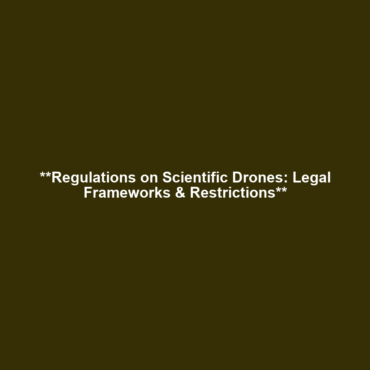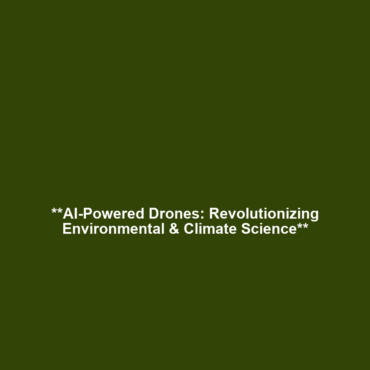Regulations Governing Scientific Drones: Legal Frameworks and Restrictions
Introduction
The integration of drones into scientific research has opened a plethora of possibilities, yet it has also necessitated stringent regulations governing scientific drones. Understanding the various legal frameworks and restrictions surrounding drone usage is crucial for researchers aiming to utilize these tools effectively. This article delineates the significance of these regulations within the broader context of drones in science, navigating through their necessity for safety, ethical considerations, and environmental impact. With the rise of drone technology, establishing a balanced regulatory environment remains paramount for both scientists and lawmakers.
Key Concepts
Several concepts underpin the regulations governing scientific drones, including:
- Airspace Management: Regulatory bodies must manage airspace to prevent collisions and ensure safe operations.
- Public Safety: Regulations often emphasize the importance of safeguarding people and property during drone operations.
- Environmental Protection: Many scientific studies involve sensitive ecosystems, which require adherence to environmental protections when deploying drones.
These principles integrate into the framework of drones in science, providing a structured, safe, and legally compliant methodology for researchers.
Applications and Real-World Uses
Understanding the regulations governing scientific drones allows for their effective application in various scientific fields. Some key applications include:
- Wildlife Monitoring: Drones are used under strict regulations to monitor endangered species without disturbing their natural habitats.
- Agricultural Research: Researchers utilize drones to assess crop health while adhering to agricultural drone regulations, enabling precision farming.
- Environmental Studies: Drones help in data collection for climate studies, ensuring compliance with local environmental laws.
These applications of regulations governing scientific drones showcase their pivotal role in advancing science while maintaining legal and ethical standards.
Current Challenges
Despite the advancements, several challenges persist in the realm of regulations governing scientific drones, which include:
- Complexity of Laws: Different regions have varied laws, leading to confusion among researchers.
- Rapid Technological Change: Regulations often lag behind the fast pace of drone technology evolution.
- Resource Limitations: Many regulatory bodies lack the necessary resources to adequately monitor and enforce drone usage.
These challenges of regulations governing scientific drones highlight the need for ongoing dialogue between scientists, regulators, and stakeholders.
Future Research and Innovations
The future of regulations governing scientific drones appears promising, fueled by innovations such as:
- AI-Powered Drones: Autonomous drones that can operate within predefined legal parameters, enhancing research capabilities.
- Blockchain Technology: Providing a secure, transparent method for tracking drone operations and compliance.
- Improved Regulatory Frameworks: Continued collaboration between governments and the scientific community may lead to more adaptive and comprehensive regulations.
These upcoming innovations signal a shift towards more effective regulations that can accommodate the future needs of drones in science.
Conclusion
In summary, the regulations governing scientific drones play a critical role in shaping the landscape of drones in science. Understanding these legal frameworks and restrictions can empower researchers to operate within compliance while pushing the boundaries of scientific discovery. It is essential to advocate for clear communication and ongoing updates in regulatory practices to foster innovation in this rapidly evolving field. For further reading, explore our articles on drone technology and its applications in environmental research.

